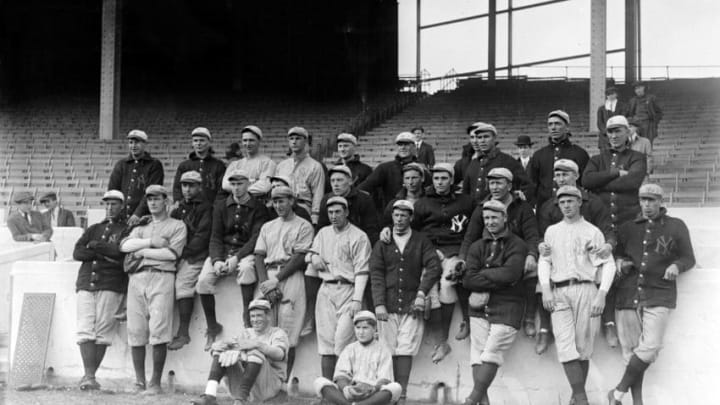
After a brutal start to the decade, the first Yankees Dynasty may have begun.
Welcome back to Yanks Go Yard’s OOTP Experiment, Yankees: An Alternate History.
This experiment will provide us with an alternate look at the history of the New York Yankees baseball club through Out of the Park Baseball 21, an in-depth baseball simulator. We began our journey in 1903, the birth of the New York Highlanders and after this, we will end up in 1919, the final year before the arrival of the Sultan of Swat, Babe Ruth.
During the first seven years of New York baseball, the Highlanders were an average ballclub. They made one serious run at the pennant but were largely not in contention.
Heading into the 1910s, New York could get a headstart on their real-life counterparts. The Yankees wouldn’t win their first World Series until 1920, but featured a handful of talented teams in the decade prior.
Although they couldn’t break through and win an AL Pennant, if the cards fall right in the virtual world, perhaps the Yanks can steal a ring or two.
One important note before we begin: 1913 marked the famous name change from the Highlanders to the Yankees. Hopefully, that may spark a few winning seasons in the decade.
Here’s a quick rundown at the Highlanders’ yearly record so far in the simulation:
Record:
1903: 56-84
1904: 76-78
1905: 89-65 (4 GB of AL Pennant)
1906: 80-74
1907: 78-76
1908: 66-88
1909: 75-79
